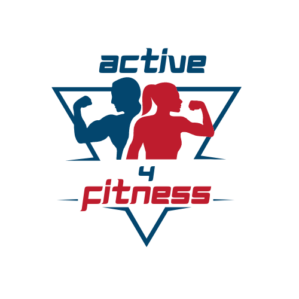How to Get a Flat Stomach After Pregnancy: A Strong and Effective Guide

Pregnancy is an extraordinary experience, but it can leave behind physical changes that many women want to address, especially when it comes to their stomach. After giving birth, many women desire to regain a flat stomach, but the path to achieving it is often misunderstood. It’s not just about losing weight; it’s about healing your body, strengthening your core, and doing so safely.
This comprehensive guide will walk you through how to flatten your stomach after pregnancy in a safe and effective way. We will cover everything from understanding postpartum changes, nutrition, specific exercises, and recovery to help you navigate this journey.
1. Understand Postpartum Changes in Your Body
Before jumping into any exercises or diets, it’s essential to understand the changes your body has gone through during pregnancy. Pregnancy affects multiple areas of your body, especially the abdomen. Here’s a quick breakdown:
Abdominal Separation (Diastasis Recti):
One of the most common issues postpartum women face is diastasis recti, a separation of the abdominal muscles caused by the stretching of the linea alba (the connective tissue between your abs) to accommodate the growing baby. This condition can leave a visible bulge or a “pooch” in your belly even after weight loss.
Weak Pelvic Floor Muscles:
Pregnancy puts a lot of strain on the pelvic floor muscles, which support the bladder, bowels, and uterus. Weak pelvic floor muscles can affect your posture and the way your core engages, contributing to a soft or protruding belly.
Loose Skin and Stretched Fascia:
The skin and fascia (connective tissue) in the abdomen can become loose after stretching to accommodate your baby. Depending on genetics, age, and weight gain, the amount of loose skin can vary.
Hormonal Changes:
Hormonal shifts after pregnancy, particularly changes in estrogen and progesterone, affect fat storage and muscle tone. These hormones can make it more challenging to shed belly fat in the early postpartum months.
2. Start with Recovery First
Jumping into intense exercises or restrictive diets too soon after giving birth can do more harm than good. Your body needs time to heal, and you should focus on gentle recovery in the first few weeks and months postpartum.
Postpartum Recovery Timeline:
- 0-6 weeks postpartum: Focus on healing, rest, and bonding with your baby. You can start gentle movements such as walking, deep breathing, and light stretches.
- 6 weeks to 3 months postpartum: Depending on how your body is healing, you may be cleared by your doctor to begin pelvic floor exercises, core strengthening, and low-impact exercises.
- 3 months and beyond: Once you’ve established a good recovery foundation, you can gradually increase the intensity of your workouts and start working toward flattening your stomach.
Always consult your healthcare provider before starting any postpartum exercise routine to ensure your body is ready.
3. Nutrition for a Flat Stomach After Pregnancy
Your diet plays a significant role in losing belly fat after pregnancy. A combination of healthy eating, portion control, and proper hydration will help you reduce excess body fat and support overall recovery.
Postpartum Nutrition Essentials:
- Focus on Whole Foods: Whole grains, lean proteins, fruits, and vegetables should be the foundation of your diet. These foods are nutrient-dense, helping you recover, produce quality breast milk if you’re nursing, and provide energy for exercise.
- Protein-Rich Foods: Protein is vital for repairing muscles, especially after pregnancy and childbirth. It also helps in burning fat by promoting satiety, so you feel full longer. Aim to consume lean protein from sources like chicken, fish, eggs, lentils, tofu, and Greek yogurt.
- Healthy Fats: Healthy fats from sources like avocados, nuts, seeds, and olive oil support hormonal balance and provide lasting energy.
- Complex Carbohydrates: Complex carbs, such as sweet potatoes, quinoa, oats, and brown rice, fuel your body, stabilize blood sugar levels, and help you maintain energy throughout the day.
- Fiber-Rich Foods: Include fiber to improve digestion and reduce bloating. Leafy greens, berries, beans, and whole grains can keep your digestive system regular and reduce the chances of constipation—a common issue post-pregnancy.
Portion Control:
It’s tempting to follow extreme diets to lose weight quickly, but this is not sustainable and can negatively affect your health. Instead, practice mindful eating and portion control. Eating smaller, more frequent meals keeps your metabolism steady and prevents overeating.
Stay Hydrated:
Water is essential for fat loss and overall health. Drinking enough water helps your body process calories efficiently, reduces bloating, and helps your skin regain elasticity. Aim to drink at least 8-10 cups of water per day, and more if you’re breastfeeding.
4. Core Exercises to Strengthen and Flatten Your Stomach
When it comes to regaining a flat stomach after pregnancy, core exercises are crucial, but it’s essential to choose the right ones. Many traditional abdominal exercises, like crunches, can actually exacerbate diastasis recti and further weaken the core. Instead, focus on deep core exercises that target the transverse abdominis (the innermost abdominal muscle) and help close the abdominal gap.
Effective Core Exercises Post-Pregnancy:
1. Deep Belly Breathing (Diaphragmatic Breathing):
- How it works: Engage your transverse abdominis and diaphragm by inhaling deeply into your belly and exhaling while pulling your belly button toward your spine.
- Why it helps: This simple exercise strengthens the core without putting pressure on the rectus abdominis (your “six-pack” muscles), promoting healing.
2.Pelvic Tilts:
- How it works: Lie on your back with knees bent and feet flat. Gently tilt your pelvis backward, flattening your lower back against the floor. Hold for 3-5 seconds, then release.
- Why it helps: Pelvic tilts engage the deep core muscles and pelvic floor while reducing strain on your back.
3.Modified Planks:
- How it works: Start with a modified plank by holding your body in a straight line from knees to shoulders. Engage your core and hold for 10-30 seconds.
- Why it helps:Modified planks strengthen the entire core without placing too much stress on the abdominal muscles, making them safe for post-pregnancy recovery
4.Heel Slides:
- How it works:Lie on your back with knees bent. Slowly slide one heel away from your body while keeping your core engaged, then return to the starting position. Repeat on the other side.
- Why it helps: This exercise targets the lower abs and helps with diastasis recti recovery.
5.Bridge Pose:
- How it works: Lie on your back with knees bent and feet flat. Lift your hips toward the ceiling, squeezing your glutes and engaging your core. Hold for a few seconds, then lower.
- why it helps: :Bridges strengthen your core, glutes, and lower back, promoting better posture and core engagement.
6.Bird-Dog Pose:
- How it works: Start on all fours. Extend your right arm and left leg out while keeping your core tight. Hold for a few seconds, then switch sides.
- Why it helps: Bird-dog is excellent for stabilizing the core, improving balance, and engaging multiple muscle groups.
Avoid These Exercises Until Fully Healed:
- Crunches
- Sit-ups
- Leg raises
- Twisting movements (like Russian twists)
These exercises can put too much pressure on your abdomen and worsen diastasis recti if performed too early in your recovery.
5. Incorporate Full-Body Workouts
Core exercises are essential, but they are not the only solution for getting a flat stomach. Full-body workouts burn more calories, build muscle, and help reduce overall body fat, which includes belly fat.
Here are a few types of exercises to include in your routine:
Strength Training:
Building muscle through strength training not only shapes your body but also increases your metabolism. Incorporate compound movements like:
- Squats
- Lunges
- Deadlifts
- Push-ups
- Rows
Strength training 2-3 times a week can help you tone your entire body, making your stomach appear flatter.
Cardio Workouts:
Cardio exercises help burn calories and reduce fat, making them an essential part of your postpartum fitness routine. However, avoid excessive cardio as it may stress your body, especially while healing.
Start with low-impact exercises like:
- Walking
- Swimming
- Cycling
As you build strength, you can gradually introduce more intense forms of cardio like jogging, dancing, or interval training.
6. Pay Attention to Your Posture
Posture plays a significant role in how your stomach appears. Pregnancy can cause postural issues like anterior pelvic tilt, which can make your belly look more protruding than it actually is. Improving your posture will help you engage your core muscles correctly and make your stomach look flatter.
Posture Tips:
- Engage Your Core: Keep your core muscles engaged throughout the day. Practice pulling your belly button toward your spine while standing, sitting, or walking.
- Avoid Slouching: Be mindful of slouching, especially when sitting. Sit tall with your shoulders back and chest open.
- Strengthen Your Back Muscles: Exercises like rows, reverse flys, and back extensions can strengthen your back and improve posture.
7. Be Patient and Realistic
Getting a flat stomach after pregnancy takes time, patience, and consistent effort. Every woman’s body is different, and the timeline for recovery and regaining your pre-pregnancy shape can vary widely. Setting realistic expectations will help you stay motivated and avoid frustration.
Understand that Healing Takes Time:
Your body went through nine months of pregnancy, and it will take time to heal and regain strength. Some women see progress within months, while others may take a year or more to feel like themselves again. This is completely normal.
Celebrate Small Wins:
Instead of focusing only on the final goal, celebrate the small victories along the way. Whether it’s increased strength, better posture, or improved stamina, every milestone is worth celebrating.
Listen to Your Body:
Pushing yourself too hard, too soon can lead to injury or setbacks in your recovery. If you experience pain, fatigue, or discomfort, take a step back and allow your body to rest. There’s no rush, and taking care of your health is the priority.
8. Prioritize Rest and Sleep
As a new mother, getting enough rest may feel impossible, but sleep is essential for muscle recovery, fat loss, and overall well-being. Sleep deprivation can lead to hormonal imbalances that make it harder to lose weight and reduce belly fat.
The Role of Sleep in Recovery:
- Muscle Repair and Recovery: During deep sleep, your body repairs tissues, builds muscles, and releases hormones like growth hormone, which aids in recovery.
- Weight Loss: Lack of sleep can increase the production of cortisol, a stress hormone that promotes fat storage, particularly in the abdominal area. Additionally, sleep deprivation can lead to cravings for sugary, high-calorie foods, making it harder to stick to a healthy eating plan.
How to Improve Sleep Postpartum:
- Nap When the Baby Naps: Even short naps can help replenish your energy and aid recovery.
- Create a Relaxing Sleep Environment: Try to create a quiet, comfortable, and dark sleep environment, even if you’re just resting for a short time.
- Share Responsibilities: If possible, share nighttime duties with your partner or family members to ensure you get some rest.
9. Managing Stress to Promote Fat Loss
Stress management is a key component of postpartum recovery and can significantly impact your ability to lose belly fat. High stress levels can lead to elevated cortisol, which promotes fat storage, especially in the abdominal area.
Simple Stress-Reduction Techniques:
- Practice Mindfulness: Mindfulness techniques like deep breathing, meditation, or simply focusing on the present moment can help reduce stress. Try to incorporate just a few minutes of mindfulness into your daily routine.
- Get Outside: Nature has a calming effect, so if you’re feeling overwhelmed, take a short walk outside. It can help clear your mind, boost your mood, and even burn calories.
- Ask for Help: Don’t be afraid to lean on family, friends, or professionals for support. Whether it’s with childcare, housework, or just someone to talk to, having a support system can alleviate stress.
10. Postpartum Recovery for C-Section Moms
If you’ve had a C-section, the recovery process can be different. You may need to take extra precautions and allow your body more time to heal. It’s important not to rush into exercises, especially core exercises, as this can increase the risk of complications.
C-Section Recovery Tips:
- Rest and Heal: In the initial weeks after your C-section, focus on rest and healing. Avoid heavy lifting and intense physical activity until you’ve been cleared by your doctor.
- Scar Tissue Massage: Once the incision has fully healed, you can gently massage the scar tissue to promote healing and improve mobility in the area.
- Modified Exercises: Start with gentle core-strengthening exercises like pelvic tilts and diaphragmatic breathing before progressing to more challenging movements. Always listen to your body and stop if you feel any discomfort around your incision.
11. Incorporating Self-Care and Body Positivity
While achieving a flat stomach might be your goal, it’s crucial to approach this journey with self-love and care. Your body has done something incredible, and it deserves kindness and respect.
Practice Body Positivity:
- Embrace Your Body’s Journey: Remember that your body has just brought life into the world, and it’s okay if it doesn’t look exactly like it did before. Focus on how you feel, how strong you’re becoming, and the progress you’re making, rather than how you look in the mirror.
- Be Kind to Yourself: Postpartum recovery, both physical and emotional, is challenging. Treat yourself with patience and compassion. Don’t compare yourself to others or fall into the trap of unrealistic expectations.
Take Time for Self-Care:
As a new mother, it’s easy to neglect your own needs while caring for your baby, but self-care is essential. Whether it’s taking a few minutes to meditate, reading a book, or enjoying a warm bath, make time for yourself. Taking care of your mental and emotional health will positively impact your physical recovery.
12. Conclusion: Your Path to a Strong and Flat Stomach
Getting a flat stomach after pregnancy is a journey that involves more than just losing weight. It’s about healing your body, building strength, and doing it in a way that respects the incredible work your body has done.
To recap:
- Understand that postpartum recovery is a process that takes time and patience.
- Start with gentle core exercises to strengthen your core muscles and heal conditions like diastasis recti.
- Focus on whole foods, proper nutrition, and hydration to support fat loss and muscle recovery.
- Include full-body workouts and cardio to burn calories and tone your entire body.
- Pay attention to posture and make small changes that help flatten your stomach.
- Prioritize rest, stress management, and self-care to promote recovery and overall well-being.
By following this strong and effective guide, you can confidently work towards flattening your stomach and feeling great in your body after pregnancy. Remember, progress takes time, but with consistency, patience, and a positive mindset, you’ll get there!



